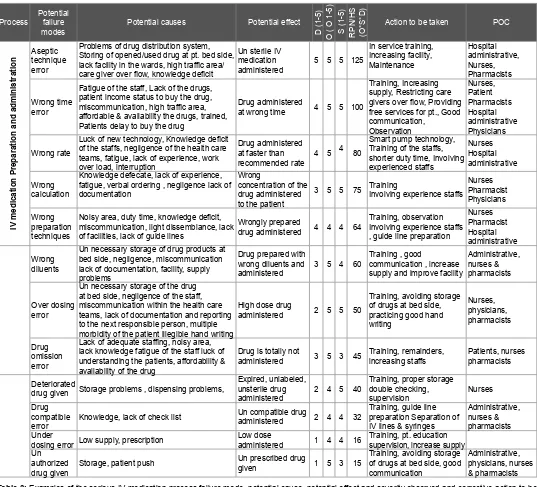Failure Mode and Effect Analysis (FMEA) of IVMedication Process in Mettu Karl Hospital, Mettu Town, Oromiya Regional State, South West Ethiopia
Full text
Figure



Related documents
In the current study, we evaluated whether the water extracts of the herbs possess any antitumor activity and exhibit synergistic/additive effects with temozolomide, an
CUFOX (curcumin plus FOLFOX) is a Phase I dose- escalation study rolling in to a Phase IIa randomised con- trolled trial combining daily oral curcumin (C3-complex; Sabinsa Corp.,
This study reveals an unexpected gender-related difference in the protective effects of breast milk; suggests that severity of respiratory diseases in infancy may be amenable
Nevertheless, recently published data have shown a 2.5 times higher abortion rate in Estonia than the reported total average in the European Union (25.1 vs 10.3, respectively in
Vol 11, Issue 9, 2018 Online 2455 3891 Print 0974 2441 IMMUNOMODULATORY EFFECT TEST FROM MORINGA LEAF EXTRACT (MORINGA OLEIFERA L ) WITH CARBON CLEARANCE METHOD IN MALE WHITE MICE
International Journal of Scientific Research in Computer Science, Engineering and Information Technology CSEIT172568 | Received 10 Sep 2017 | Accepted 22 Sep 2017 | September October
The questionnaire consisted of 56 items in nine sections related to respon- dents ’ perceptions on methods to achieve weight reduc- tion; preferences of weight management
services, capacity building or development that might be offered as part of the research activities. This is consistent with other findings from poor communities, where re-